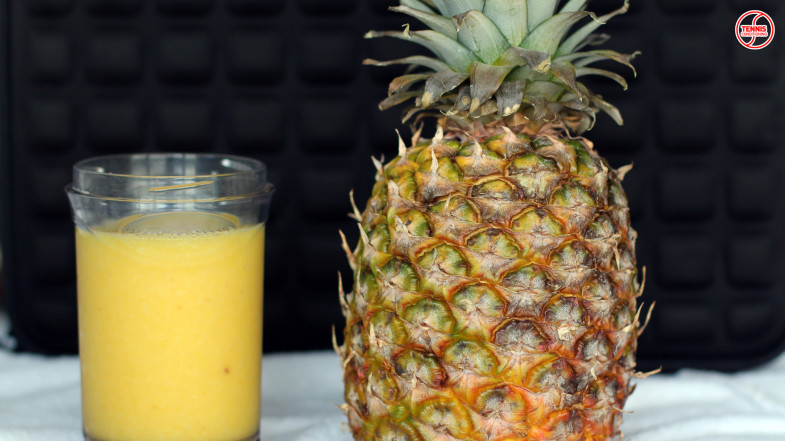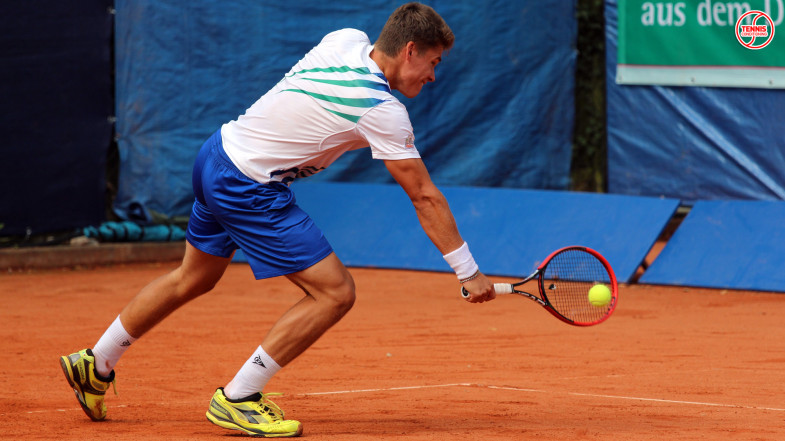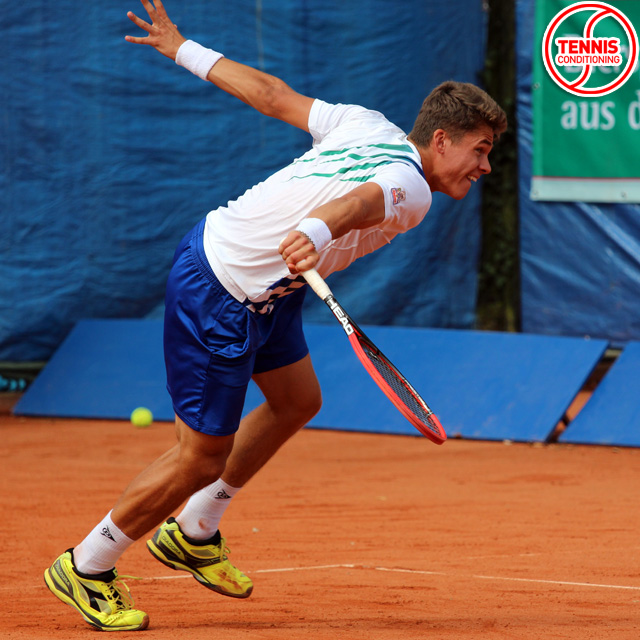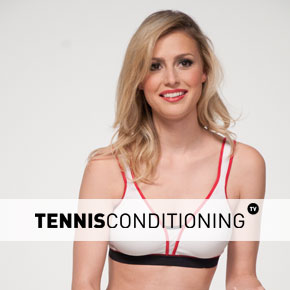Tennis elbow can be a pain in the butt, or actually the arm, and prevent you from playing tennis. Fortunately we have some treatment options for you that don’t require surgery.
In last week’s episode you could take a look inside a professional training session with Swiss National Junior Tennis Champion Alexander Ritschard.
Ok, so let’s talk about tennis elbow and how it develops before I provide recommendations to get rid off the pain. The recommendations focus is on improving:
- The technique of the backhand ground stroke
- Flexibility & strengthening the arm & forearm musculature
- Your equipment choice
What is Tennis Elbow?
Tennis elbow (also referred to as lateral epicondylitis) actually is an inflammation (tendonitis) of the wrist extensor tendon, which is formed by four forearm muscles (extensor carpi radialis longus & brevis, extensor digitorum communis, and extensor carpi ulnaris).
How Tennis Elbow Develops
Most sports scientists believe that tennis elbow starts with a micro tear in the wrist extensor muscles.
This occurs due to improper warm-up, overuse and/or poor technique. In other words, tennis elbow mainly develops by regularly reinforcing poor stroke production technique, in particular during the backhand ground stroke.
Slapping or punching the ball instead of swinging fully through the shot increases pressure on the wrist extensor tendon. In other words, hitting a backhand groundstroke (making contact with the ball) while leading with a flexed elbow (elbow is at or near 90˚) instead of the shoulder/body will cause inflammation of the wrist extensor tendon.
Another key factor is poor hand-eye coordination skills, which causes you to hit the ball off center – outside the racquet’s “sweet spot” – causing additional pressure.
Next we’ll take a closer look at the treatment recommendations.
Tennis Elbow Treatment Options

If you currently are experiencing pain stop playing tennis and refrain from any activities that cause you to hold something with a firm grip.
You can ice the area or use anti-inflammatory drugs or foods (e.g. pineapples). Once the pain has subsided you can start with optimizing the backhand.
OPTIMIZING THE BACKHAND GROUND STROKE
You should make contact with the ball in front of the body with the wrist and elbow extended. This can be accomplished by making contact with the ball in front of your right foot (right-handed players; LEFT foot for lefties) while you are positioned perpendicular to the net, leading with the shoulder (shoulder points to the net).


Rotate the trunk and take the racquet back so that the racquet head points behind you towards the fence. Now release and swing through the shot without stopping the “follow through” – let the racquet fly while swinging the left arm towards the back fence!
Now you are hitting the ball with power generated from the trunk and upper arm/shoulder instead of the wrist extensor musculature.
Another option is to switch to a two-handed backhand where you predominantly hit the ball with the left hand, thereby decreasing the stress on the forearm of the right arm. “
ENHANCING FLEXIBILITY & STRENGTH OF WRIST EXTENSORS
Next we take a closer look into how to enhance flexibility and strength of the wrist extensors. Before you walk onto the court and after the match you need to perform the wrist extensor stretch.
Make sure that you warm-up the wrist first by moving your hand up and down a few times. Hold the stretch for 40 – 60 seconds for optimal results and repeat 2 – 3 times.
To strengthen the wrist extensors place your lower arm on a flat surface (e.g. table) so that the wrist and hand are hanging in the air and your palm faces towards the ground and the lower arm is supported.
Then take a light resistance (e.g. 2lb dumbbell, water bottle) and move the wrist upwards so that your knuckles move towards you. Then release and repeat. Alternatively you can also perform the weighted roll-ups.

EQUIPMENT RECOMMENDATIONS
Depending on the equipment you are currently using, changes might be necessary. Important factors are:
- Type of racquet (no “extended” version)
- String type & tension
- Grip size
Try using a light racquet, for example the Wilson BLX Cierzo Two (Head Size: 120 sq. in. / 774.19 sq. cm.; Strung Weight: 9.8oz / 277.83g), with a larger head size because it will reduce the stress on the wrist extensor tendon due to a larger sweet spot and a lighter resistance.
Stay away from racquets that are longer than usual (extended versions) since they can increase the stress on the wrist extensor tendon.
Possible Medical Treatments
If you prefer medical treatments you can try using:
- Ultrasound
- Galvanic stimulation
- Transverse friction massage
Keep in mind though that the medical treatments can only treat the symptoms but don’t get rid of the cause of tennis elbow.
In order to stay pain-free in the future you should perform regular warm-up, stretching and strengthening exercises we provided here.
Our recommendations will ensure that the pain won’t be recurring and you can enjoy playing tennis again!
Training Zone
In this section we provide you with some more workouts and training tips you may be interested in to optimize your training:

